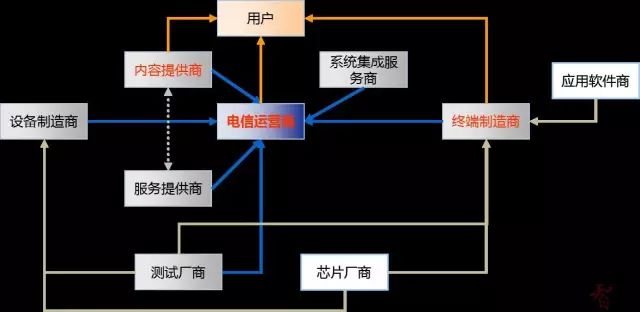After the deployment of a fully covered operator-level NB-IoT network, it will bring disruptive models to the IoT field. However, the diversity of terminals and users poses challenges for attracting large-scale terminal access to this network. Therefore, another important task for the current commercialization of narrowband IoT is to cultivate the terminal ecosystem and seek scalable terminals.
Currently, there is an increasing number of discussions about NB-IoT standards and commercialization. However, most of these discussions still revolve around the concept and future vision of narrowband IoT, with few addressing the issues faced during implementation. Of course, I firmly believe that manufacturers promoting the development of the NB-IoT industry both domestically and internationally are undoubtedly working tirelessly to identify and solve various potential issues. As an industry observer, I hope to discuss these aspects. In last week’s article titled “The First Year of NB-IoT Commercialization: Let’s Talk About Some Real Issues in Its Commercialization,” I explored the operational models of narrowband IoT commercialization. This week, I hope to start from the industrial ecosystem of narrowband IoT and discuss topics related to terminals accessing narrowband IoT in the future.
1. Diverse Terminals and Users – A More Complex Ecosystem
As a wide-area network, examining the ecosystem of NB-IoT has certain reference significance from traditional cellular networks. During the development of the traditional telecommunications industry, the maturity of the industry chain was crucial, especially during the commercialization of 3G/4G networks, where the decline of the operator’s dominant position highlighted the importance of ecosystem thinking. The typical industrial ecosystem of traditional cellular networks is as follows:

The above image shows the ecosystem of the traditional cellular network era, where operators held a dominant position, which also relied on the maturity of other links in the industry chain. In the era of IoT, especially when telecommunications operators have a fully covered narrowband IoT, this network is dedicated to communication between things. In my view, the most significant changes in the industry chain compared to the traditional cellular industry ecosystem are in the “terminals” and “users” segments. Why is that?
In the past communication market, “terminals” generally referred to mobile phones. Although there were differences in brands and performance, their functions were basically the same, and the hardware and software were mostly standardized, making them relatively homogeneous terminals. Looking at “users,” they were primarily individuals. Although operators had a large number of government and enterprise users, most of their products were paid for by corporate clients, and the products did not reflect the characteristics of enterprises or industries.
In contrast, the “terminals” and “users” in the narrowband IoT industrial ecosystem are diverse. Terminals accessing narrowband IoT can include various types of meters, smoke detectors, fire extinguishers, trash bins, trackers, wearable devices, and more, all reflecting the characteristics of various industries. The users of narrowband IoT, in addition to individual users, are more diverse in industry users compared to traditional communication industries. Unlike the user demands in traditional communication markets, which focus on making calls, sending messages, and browsing the internet, the user demands of narrowband IoT have begun to deeply integrate with their industry applications. Even for individual users, the demand differences among various types of consumer terminals are significant.
Thus, the diverse and rich terminals and varied user demands form the most significant characteristic of the NB-IoT network ecosystem, which is different from the traditional cellular network ecosystem. The large number of different terminals and users presents a more complex ecosystem for the narrowband network operators, requiring them to address diverse and fragmented demands, thus necessitating a change in thinking regarding network operations.
2. Scalable Terminals – A Key to Operator-Level Narrowband IoT Operations in the Early Stages
Undoubtedly, once the fully covered operator-level NB-IoT network is deployed, it will bring disruptive models to the IoT field. A large number of terminals that only need to transmit small amounts of data can connect to the network directly like mobile phones, without any manual configuration, as long as they comply with NB-IoT specifications. However, there is a necessary condition: the terminals must mature in sync with the network deployment; otherwise, a large number of terminals will remain idle after the network is built, wasting network resources.
The maturity of the industry chain is crucial for network commercialization, especially the maturity of terminals. Reflecting on the history after the issuance of 3G licenses, China Mobile promoted the operation of the TD-SCDMA network. Compared to Unicom and Telecom, which sold mature terminals from Apple, Nokia, Motorola, and Samsung, China Mobile initially had only a small number of low-end devices supporting its network, leading to an awkward situation for 3G development. China Mobile had to spend hundreds of billions of yuan each year to subsidize terminals to promote the maturity of the TD-SCDMA terminal industry chain.

As analyzed above, the diversity of terminals and users poses challenges for attracting large-scale terminal access to this network. Among the numerous NB-IoT industry promoters frequently featured in the news media, apart from globally renowned chip, communication equipment, and operator giants like Huawei, Vodafone, China Mobile, Ericsson, and Qualcomm, terminal and application manufacturers rarely make an appearance. The NB-IoT applications showcased at major exhibitions are limited to a few application scenarios such as metering and parking. Therefore, while these giants continuously look forward to the full commercialization of NB-IoT this year or next, I hope to see more scalable terminals emerge.
Narrowband IoT terminals, especially industry terminals, cannot be established overnight. Imagine a low-power wide-area network with a capacity ten times that of cellular networks being deployed, but lacking corresponding terminals and remaining idle. At this point, finding scalable terminals becomes the biggest task for the early operations of the NB-IoT network.
3. Cultivating the Terminal Ecosystem – Synchronizing Terminal Maturity with Network Deployment
Therefore, in my view, another important task for the current commercialization of narrowband IoT is to cultivate the terminal ecosystem. Generally speaking, for communication between things, we can start from two angles: finding scalable application scenarios and homogeneous application terminals.

For homogeneous application terminals, wearable devices may become consumer terminals for large-scale access to the NB-IoT network. On one hand, wearable devices have extremely high power consumption requirements, and much of this consumption is due to remote communication. Therefore, a low-power communication method is needed, and Bluetooth and other low-power communication methods are limited to communication between devices and mobile phones, unable to transmit directly to the cloud. Low-power wide-area network communication methods are the best alternative. On the other hand, wearable devices have already formed a large shipment volume, with over 10 million children’s positioning devices shipped in 2015 alone. According to Yu Wenjie, CEO of Oufu Communication, a member of the National Low-Power Wide-Area Network Industry Alliance, future smart wearable products will require NB-IoT communication technology. When wearable devices begin to widely support NB-IoT technology, they will cultivate a large group of terminals for the commercialization of the NB-IoT network.
For scalable application scenarios, many are industry applications targeting businesses (To B). Cultivating their ecosystem requires an in-depth understanding of the industry. For example, in the environmental protection industry, multiple workflows require narrowband networks for data transmission and exchange. Therefore, in the early operations of the NB-IoT network, it may be beneficial to collaborate with industries or enterprises that have scalable application scenarios to promote demonstration applications.
In summary, from the perspective of the industrial ecosystem, the maturity of the terminal ecosystem is crucial for the commercialization deployment of NB-IoT. As network commercialization approaches, it is time for scalable mature terminals to step into the spotlight.